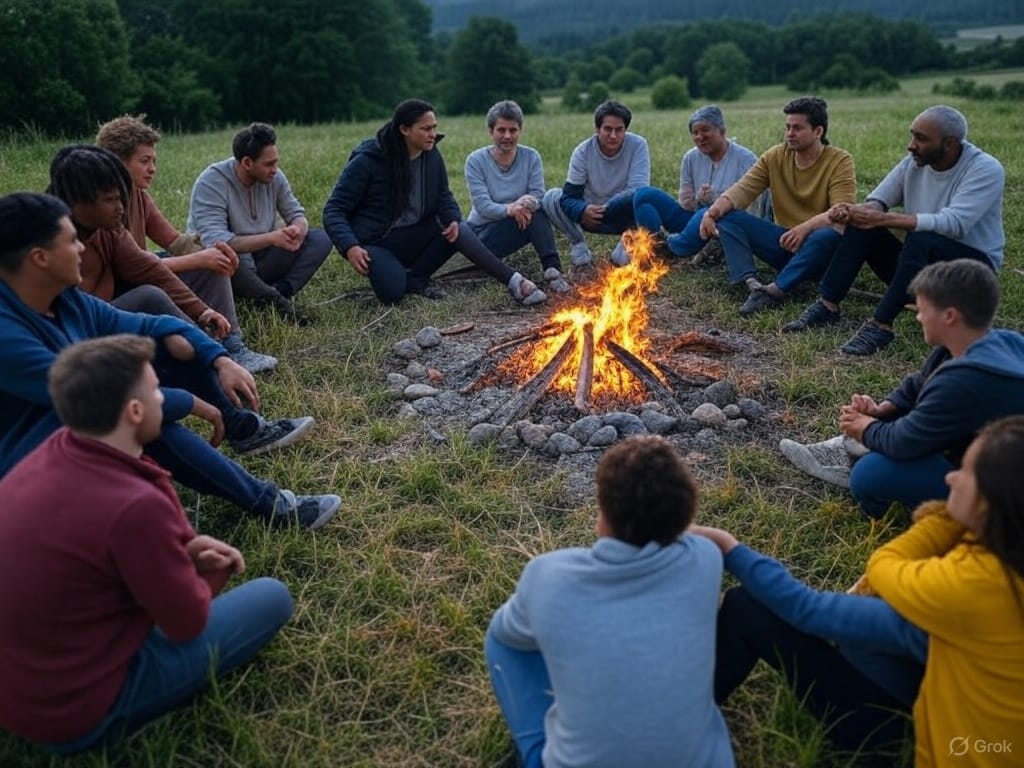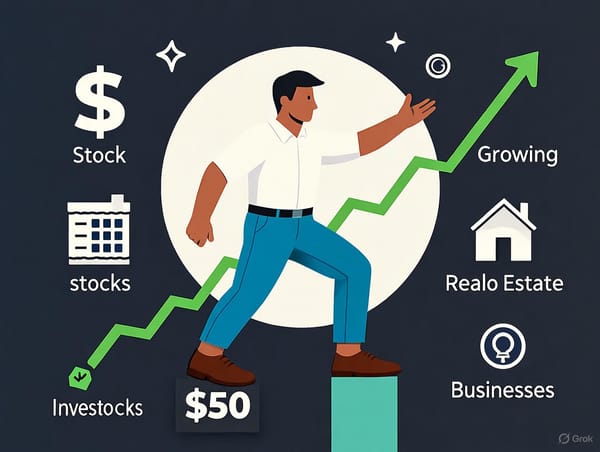Community
A strong community, built on trust and collaboration, amplifies individual resilience and collective potential, creating a supportive network that uplifts its members through life's challenges and triumphs.

History and human experience tell us that no one thrives alone. Whether it’s a family unit, a group of friends, or a professional network, the connections we forge with others amplify our resilience, expand our capabilities, and provide a foundation for enduring success. At its core, community is about trust, mutual support, and the collective power that emerges when individuals unite toward a shared purpose. Let's explore how to build networks of trust and support, why collaboration is a skill worth mastering, and how a strong community can lift you up and help you stand firm in the face of life’s challenges.
Why Community Matters
Humans are inherently social creatures. From the earliest days of our existence, survival depended on working together—hunting in groups, sharing resources, and protecting one another from threats. While the modern world has shifted many of these dynamics, the need for connection remains hardwired into us. A strong community offers more than just companionship; it provides emotional, practical, and even spiritual support. When you’re part of a network that values trust and reciprocity, you gain access to a safety net that catches you during tough times and a springboard that propels you toward your goals.
Beyond the personal benefits, communities have a ripple effect. A group of individuals who support each other can inspire change, solve complex problems, and create something far greater than the sum of its parts. Think of open-source software projects, grassroots movements, or even tight-knit neighborhoods—each demonstrates how collaboration within a community can lead to extraordinary outcomes. Building such a network starts with intention and a commitment to fostering relationships grounded in trust.
Building Networks of Trust and Support
Trust is the cornerstone of any meaningful community. Without it, collaboration falters, and connections remain superficial. So, how do you build a network where trust thrives?
Start Small and Be Authentic
The foundation of trust begins with authenticity. You don’t need to connect with hundreds of people overnight. Instead, focus on a small circle of individuals who share your values or goals. Be genuine in your interactions—share your strengths, acknowledge your vulnerabilities, and show up consistently. Over time, these authentic connections will naturally expand as others see the value in your reliability and openness.
Give Before You Take
A community isn’t a transactional arrangement; it’s a living ecosystem. One of the fastest ways to build trust is to offer support without expecting immediate reward. Whether it’s sharing knowledge, lending a hand, or simply listening, giving freely demonstrates your commitment to the group’s well-being. This generosity fosters goodwill and encourages others to reciprocate, creating a cycle of mutual support.
Communicate Clearly and Respect Boundaries
Trust also hinges on clear communication. Be upfront about your intentions, needs, and limitations. Equally important is respecting the boundaries of others—don’t demand more than someone is willing to give. A community built on mutual respect is one where people feel safe to contribute without fear of overreach or judgment.
The Art of Effective Collaboration
Once you’ve established a network of trust, the next step is learning to collaborate effectively. Collaboration isn’t just about working together; it’s about leveraging the collective strengths of a group to achieve something bigger than any one person could accomplish alone. Mastering this art requires patience, adaptability, and a willingness to embrace diverse perspectives.
Embrace a Shared Vision
Collaboration thrives when everyone is aligned around a common purpose. Whether it’s a creative project, a business venture, or a community initiative, take the time to define a shared vision that excites and motivates the group. This clarity ensures that individual efforts contribute to a unified goal, reducing friction and boosting momentum.
Leverage Diverse Strengths
One of the greatest advantages of a community is its diversity of skills and experiences. Effective collaboration means recognizing and tapping into these differences. Maybe one person excels at planning, while another shines in execution. By assigning roles that play to each member’s strengths, you create a dynamic team where everyone feels valued and empowered.
Navigate Conflict Constructively
No community is immune to disagreement, but conflict doesn’t have to derail collaboration. Approach differences with curiosity rather than defensiveness. Listen to understand, not to argue, and seek solutions that honor the group’s shared purpose. When handled well, conflict can even strengthen a community by deepening trust and refining its direction.
Creating a Community That Lifts You Up
A truly powerful community doesn’t just exist—it actively uplifts its members. This kind of support system doesn’t happen by accident; it’s cultivated through intentional effort and a culture of encouragement.
Celebrate Wins Together
In a strong community, no success is too small to acknowledge. Celebrating milestones—whether personal or collective—reinforces the idea that everyone’s progress matters. This positivity fuels resilience, reminding members that they’re part of something bigger and that their efforts contribute to the whole.
Stand Firm in Adversity
Life is unpredictable, and challenges are inevitable. A community that stands firm together is one that rallies during tough times. This might mean offering practical help, like pitching in during a crisis, or simply providing a listening ear. When individuals know they’re not facing struggles alone, they’re more likely to persevere and emerge stronger.
Foster Growth and Accountability
A lifting community doesn’t just comfort—it challenges. Encourage each other to grow, set goals, and step out of comfort zones. Gentle accountability—checking in on progress or offering constructive feedback—helps members stay on track and reach their potential. This balance of support and challenge is what transforms a group into a force for personal and collective growth.
The Ripple Effect of a Strong Community
The beauty of building networks of trust and collaboration is that their impact extends far beyond the immediate group. A resilient community inspires others to connect, collaborate, and contribute. It becomes a model for what’s possible when people come together with intention and heart. In a world that can feel fragmented, creating such a space is an act of hope—a reminder that our strength lies not in isolation, but in the bonds we forge.
Final Thoughts
You don’t need to overhaul your life to build a community. Start where you are—with the people already around you, the passions you hold, or the causes you care about. Reach out, listen, and take small steps toward collaboration. Over time, these efforts will grow into a network that amplifies your strength and resilience, proving that together, we are unstoppable.





